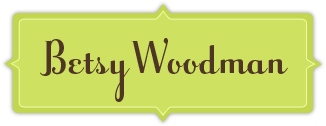Coronavirus, The Writing Life »
Coronareality
April 20, 2020 | Comments Off on Coronareality | Betsy Woodman
Last summer, I optimistically said I would be blogging again by fall, but real life intervened, and here we are, spring 2020, in a vastly different world.
Those of us lucky enough to be hunkered down at home are living at one remove from reality. We’re not risking our lives caring for the sick, picking the crops, fire-fighting, or collecting garbage. In contrast, life’s all too real for the heroic folks that are performing these and other essential services.
The rest of us are getting an outside world that come over wires and radio waves. Something is often lost in translation–people’s faces look oddly warped on the screen, their speech gets interrupted by gaps and stutters. You have to make allowances and remember what they look like in person.
Don’t get me wrong–I’m hugely grateful to have FaceTime and other communications tools. In the last few weeks, I’ve been to family parties, class reunions, church services, writers’ luncheons, and community gatherings via Zoom.
![]() I also gave the Easter message remotely for the Kearsarge UU Fellowship, which usually meets at the Stone Chapel in Andover, New Hampshire. The commute wasn’t burdensome, but I did have to plan things I usually don’t think about, such as the background my computer’s camera was capturing. My living room, alas, is not as immaculate and serene as William Brangham’s appears on the PBS Newshour, so I settled for an unrevealing corner.
I also gave the Easter message remotely for the Kearsarge UU Fellowship, which usually meets at the Stone Chapel in Andover, New Hampshire. The commute wasn’t burdensome, but I did have to plan things I usually don’t think about, such as the background my computer’s camera was capturing. My living room, alas, is not as immaculate and serene as William Brangham’s appears on the PBS Newshour, so I settled for an unrevealing corner.
Giving the talk, I missed feeling the energy of other people in the room. It’s harder to tell online if you’re putting people to sleep. I ad-libbed less than usual and paid more attention to sticking to a time limit. The audience consisted of little squares with tiny faces in them. I knew that they were real people…but mediated by a lot of bits and bytes.
Navigating today’s reality makes me think of reading and writing fiction, or of doing history. The fiction writer uses memories and research to create imaginary characters and settings and action. The historian goes through old documents and photographs to brings the past to life. Both start with scraps and try to build a plausible whole. Readers then put their own spin on that imagined world.
Keeping our friendships and groups alive today, we’re all maintaining social worlds with electronic scraps. I’ll bet our brains are working overtime in the process. Maybe we shouldn’t complain about that–it might even make us smarter in the long run.





